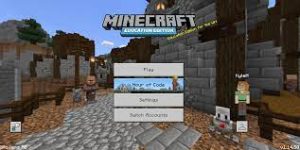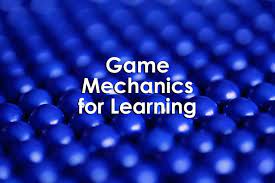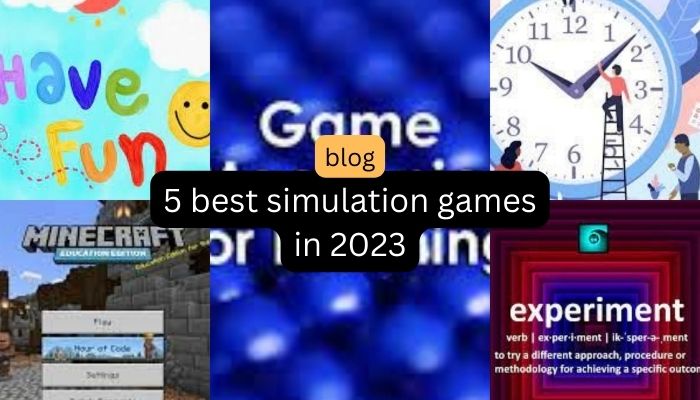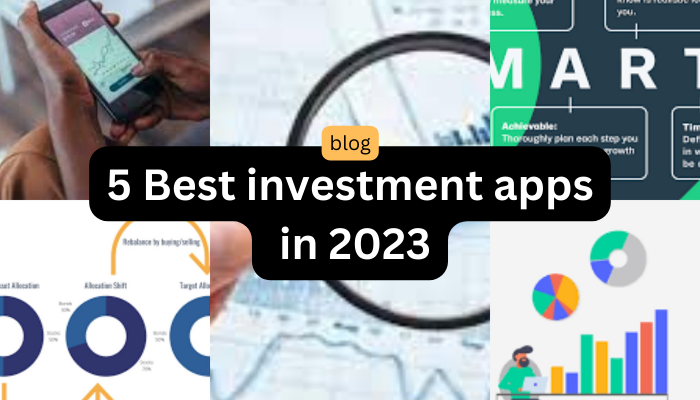5 best simulation games in 2023
Simulation games are a type of video game that aims to replicate real-world systems, processes, or situations. These games can be incredibly immersive and offer players the chance to experience and interact with a wide variety of scenarios and environments. Simulation games can be based on real-world systems, such as city-building or flight simulation games, or they can be more fantastical, such as life simulation games that allow players to control virtual people or creatures. Some of the best simulation games offer a high level of realism and detail, as well as a wide range of customization options that allow players to tailor their experience to their preferences. Whether you’re interested in building your own city, managing a trucking business, or flying a plane, there’s a simulation game out there for you.
The gameplay of simulation games can vary widely depending on the specific game and genre. Here are some general tips for getting started with simulation games:
Contents
Start with the tutorial:

Many simulation games will have a tutorial mode or in-game tutorial that can help you learn the basics of the game. Take the time to go through the tutorial to get a feel for the controls and gameplay mechanics.
Features
Starting with the tutorial is a good way to familiarize yourself with the controls and gameplay mechanics of a simulation game. Some other features that you may find in a tutorial mode or in-game tutorial include:
- Step-by-step instructions: Many tutorials will guide you through the basics of the game with clear, step-by-step instructions.
- Interactive elements: Some tutorials will include interactive elements, such as mini-games or quizzes, to help you learn the basics of the game.
- Tips and hints: Many tutorials will also offer helpful tips and hints to help you get started and succeed in the game.
- Practice modes: Some tutorials will include practice modes or challenges that allow you to test out your skills and see how well you understand the game’s mechanics.
- Access to in-game resources: Some tutorials may also unlock or provide access to in-game resources, such as special items or abilities, that can help you as you progress through the game.
Learn the game’s mechanics:

Each simulation game will have its own unique set of mechanics and systems that you’ll need to learn in order to play effectively. Pay attention to the game’s tutorials and in-game hints, and don’t be afraid to look up online guides or ask for help if you’re having trouble understanding something.
Features
I’m sorry, but you will need to provide more context for me to understand what you are asking. Could you please tell me more about the game you are interested in learning about?
Experiment and try different approaches:

Simulation games often offer a wide range of options and choices, and there may not always be a “right” or “wrong” way to play. Don’t be afraid to try out different approaches and see how they work for you.
Features
There are many different approaches you can take when experimenting with different features for a machine learning model. Here are a few ideas:
- Feature engineering: This involves creating new features from existing data by combining or manipulating existing features in a meaningful way. For example, you might create a new feature that represents the ratio of two existing features, or you might create a new feature that represents the logarithm of an existing feature.
- Feature selection: This involves selecting a subset of the available features to use in your model. You can use a variety of techniques to select the most relevant features, such as removing highly correlated features or using feature importance measures.
- Feature extraction: This involves using techniques like principal component analysis (PCA) or independent component analysis (ICA) to extract the most relevant features from a larger set of features.
- Hyperparameter tuning: This involves adjusting the parameters of your model to optimize its performance. For example, you might experiment with different values for the learning rate or the regularization strength in a neural network.
- Ensemble models: This involves training multiple models and combining their predictions to make a final prediction. You can experiment with different types of models (e.g., decision trees, neural networks) and different ways of combining their predictions (e.g., averaging, voting).
- Transfer learning: This involves using a pre-trained model and fine-tuning it on your own dataset. This can be a good option if you have a small dataset and want to leverage the knowledge learned by a larger model on a similar problem.
Take breaks and manage your time:

Simulation games can be quite complex and require a lot of time and attention to play effectively. Be sure to take breaks and manage your time wisely to avoid burnout.
Features
There are several key features of good time management and taking breaks that can help you be more productive and avoid burnout:
- Set clear goals: Having specific, achievable goals will help you stay focused and motivated.
- Make a plan: Break your goals down into smaller tasks and create a schedule to help you stay on track.
- Prioritize tasks: Determine which tasks are most important and tackle those first.
- Use time-blocking: Set aside specific blocks of time for specific tasks. This can help you stay focused and avoid distractions.
- Take breaks: Taking breaks helps you rest and recharge, which can increase your productivity.
- Avoid multitasking: Focusing on one task at a time can help you be more efficient and effective.
- Limit distractions: Turn off notifications, find a quiet place to work, and eliminate other distractions to help you stay focused.
- Stay organized: Keep your workspace and materials organized to help you find what you need and stay on track.
- Review and adjust: Regularly review your progress and adjust your plan as needed.
Have fun:

Above all, the most important thing is to enjoy yourself. Simulation games can be challenging, but they can also be extremely rewarding and fun. Don’t get too discouraged if things don’t go as planned – part of the fun is in the journey.
Features
- User interface: This refers to the way that the user interacts with the program or product. A good user interface should be intuitive, easy to use, and visually appealing.
- Functionality: This refers to the specific tasks or actions that the program or product is designed to perform. For example, a word processor should have features that allow the user to create and edit documents, while a social media app should have features that allow users to connect and communicate with each other.
- Customization: Some programs and products allow users to customize certain aspects of their experience, such as the appearance or behavior of the program. This can be a useful feature for users who want to personalize the way they use the program or product.
- Integration: Some programs and products can be integrated with other programs or products, allowing users to access and use them in conjunction with one another. For example, a project management tool might integrate with a customer relationship management system to allow users to easily access and update customer information.
- Security: Many programs and products have features that help protect user data and keep it secure. These might include encryption, authentication, and access controls.
- Performance: A program or product’s performance refers to how quickly and efficiently it performs its intended functions. Programs and products with good performance are generally more pleasant to use and can help users be more productive.







